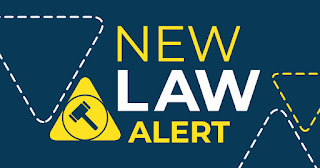Get your anti-discrimination guidance starting on December 10, 2020 on HUD's new searchable website, which will also give guidance on lending, foreclosures, and much more.
Currently, guidance is available here.
Starting on December 10, 2020, HUD will make available "a single, searchable, indexed website," and make guidance subject to a 30 day public comment period with a procedure for the public to petition to modify or withdraw guidance per its Interim Final Rule available at 85 FR 71537.
HUD guidance documents "are statements of general applicability and future effect that set forth policy on statutory, regulatory, or technical issues or interpret statute or regulation." In plain English, guidance advises industry as to HUD's interpretation of laws as applicable to described activity. As such, industry is better able to function, in a regulated environment, when industry can request direction on gray areas of law prior to making investment or taking action in that area.
As background, "[o]n October 9, 2019 (84 FR 55235), the President issued E.O. 13891, “Promoting the Rule of Law Through Improved Agency Guidance Documents," which "requires that each Federal agency take certain actions to ensure the transparent availability and use of guidance documents." This Interim Final Rule is made in satisfaction of the E.O.
















